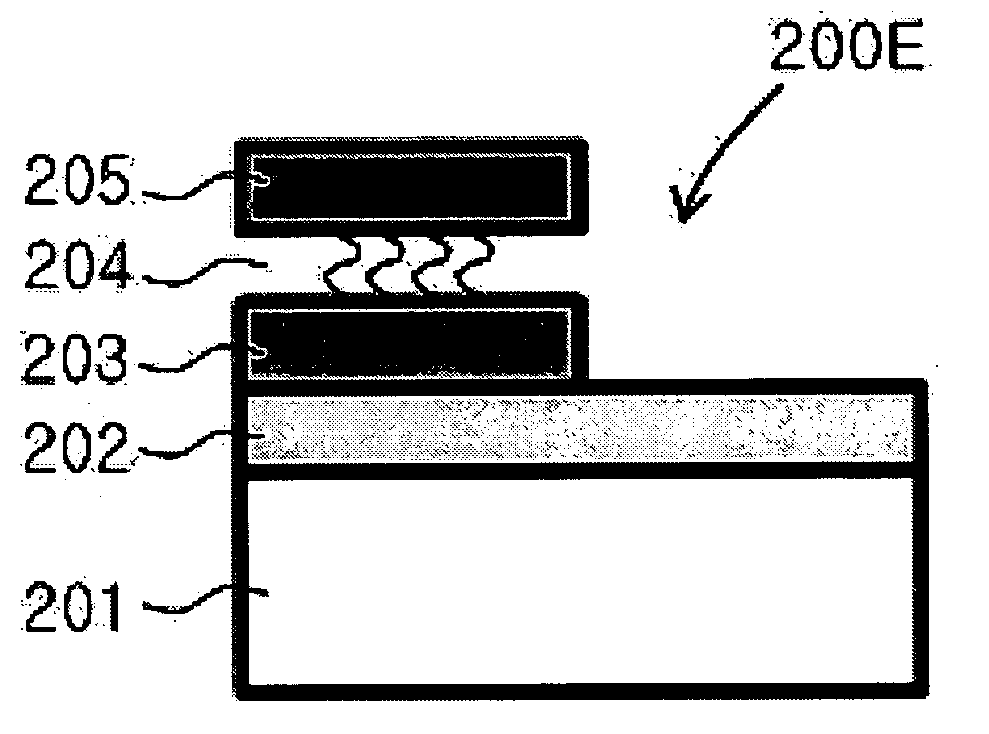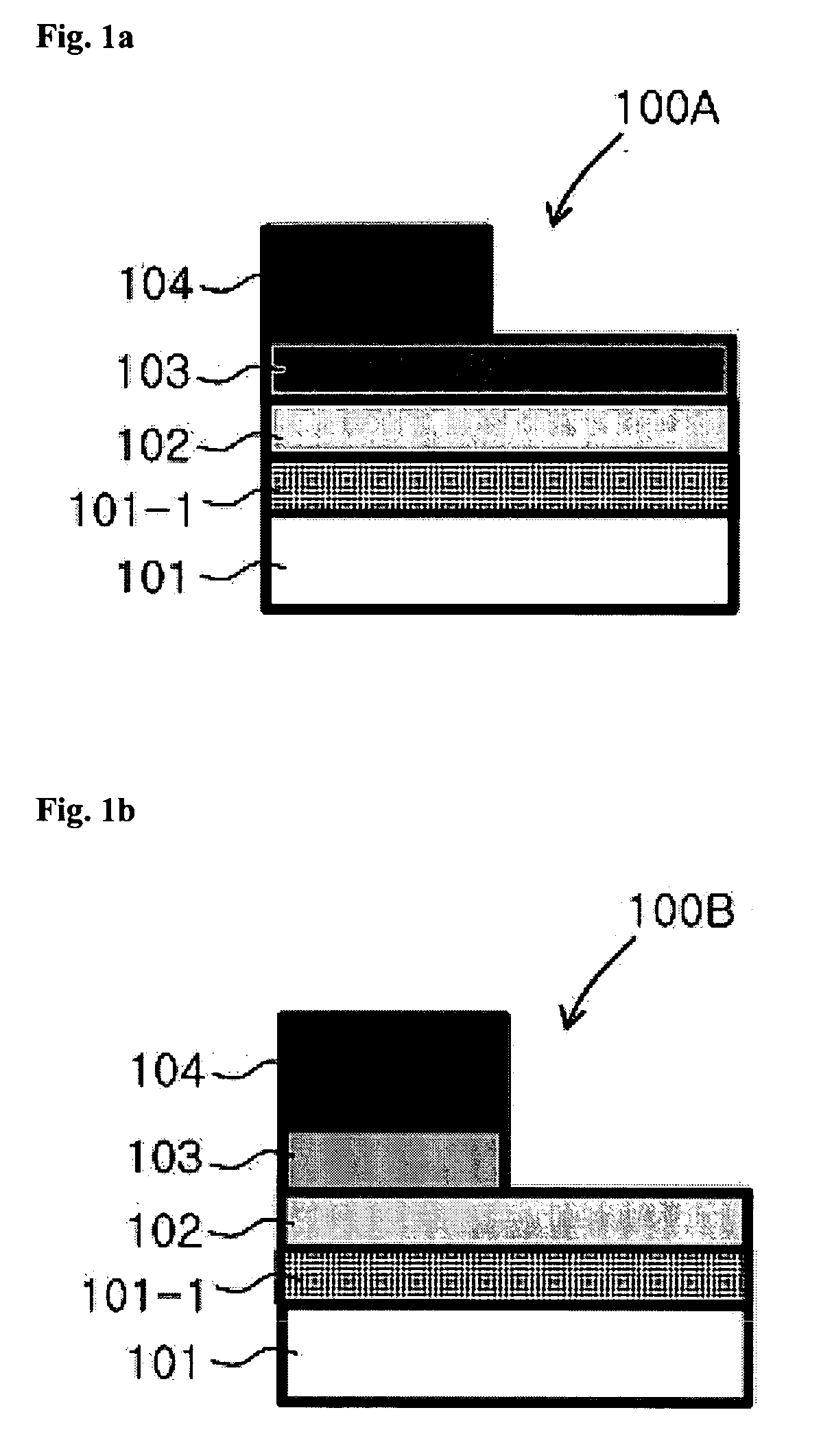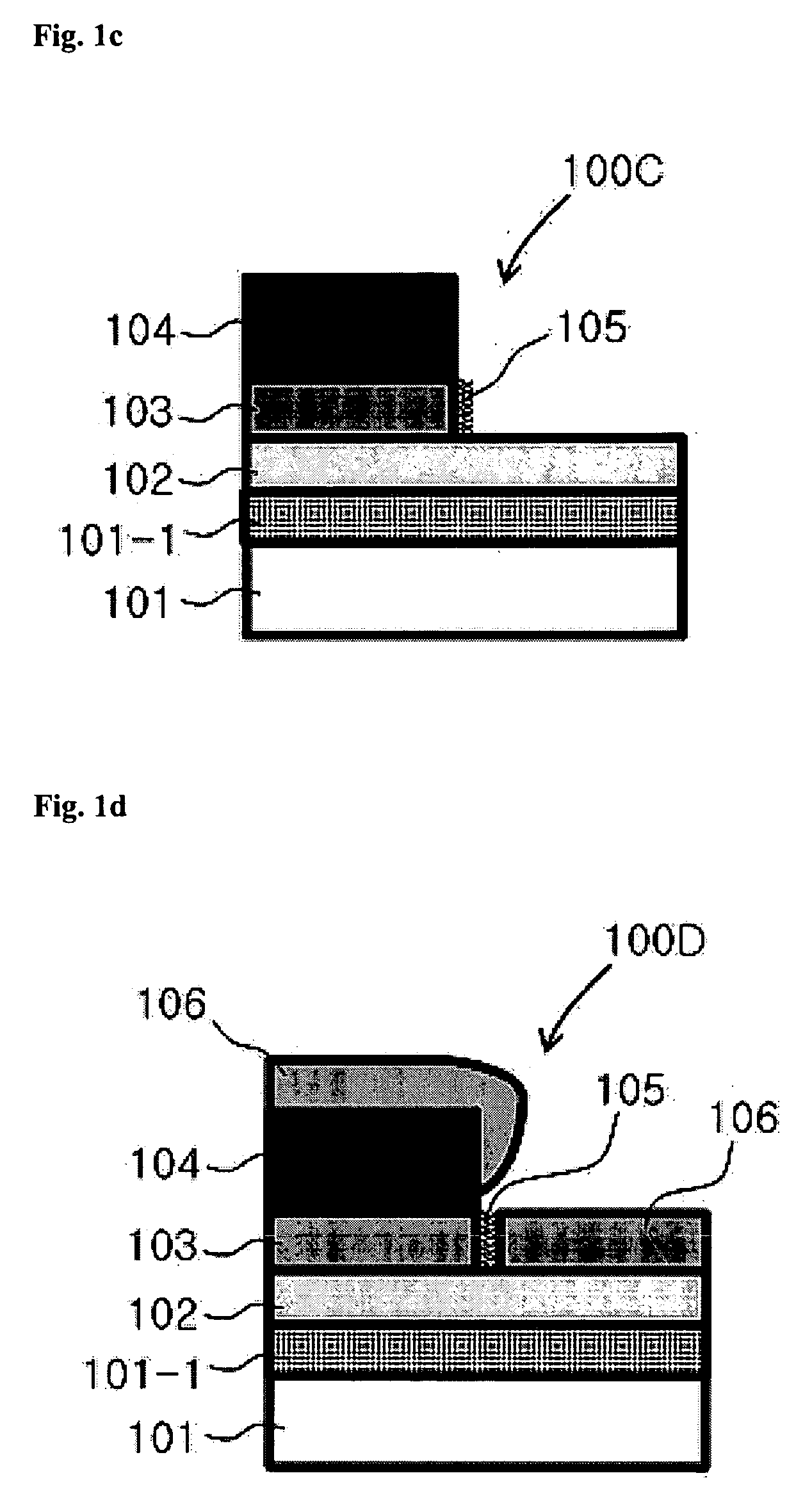Method of forming a nanogap and method of manufacturing a nano field effect transitor for molecular device and bio-sensor, and molecular device and bio-sensor manufactured using the same
a technology of nano-gaps and nano-fields, which is applied in the direction of photomechanical devices, originals for photomechanical treatment, instruments, etc., can solve the problems of limiting the scaledown of the device, the technical limit of the method of forming a gap of molecular length using the conventional lithography process, and the limitation of the manufacturing method
- Summary
- Abstract
- Description
- Claims
- Application Information
AI Technical Summary
Benefits of technology
Problems solved by technology
Method used
Image
Examples
Embodiment Construction
[0039] Hereinafter, a method of forming a nanogap for a molecular device or a bio-sensor and a method of manufacturing a nano field effect transistor for a molecular device or a bio-sensor according to the preferred embodiment of the present invention will be described in detail with reference to the accompanying drawings.
[0040]FIG. 1A to FIG. 1F are sectional views showing sequentially a method of forming a planar nanogap for a bio-sensor according to one embodiment of the present invention.
[0041] As shown in the drawings, a first aurum (Au) layer (metal layer) is formed on a silicon substrate, and a second Au layer spaced apart from the first Au layer is formed by using a self-assembled monolayer (hereinafter, referred to as “SAM”), so a planar nanogap corresponding to a length of the SAM is formed.
[0042] A process for forming the nanogap is described in detail as follows.
[0043] First, a back-gate thin layer 101-1 to be formed by a doping process, an insulating layer 102, a fi...
PUM
| Property | Measurement | Unit |
|---|---|---|
| length | aaaaa | aaaaa |
| width | aaaaa | aaaaa |
| molecular size | aaaaa | aaaaa |
Abstract
Description
Claims
Application Information
 Login to View More
Login to View More - R&D
- Intellectual Property
- Life Sciences
- Materials
- Tech Scout
- Unparalleled Data Quality
- Higher Quality Content
- 60% Fewer Hallucinations
Browse by: Latest US Patents, China's latest patents, Technical Efficacy Thesaurus, Application Domain, Technology Topic, Popular Technical Reports.
© 2025 PatSnap. All rights reserved.Legal|Privacy policy|Modern Slavery Act Transparency Statement|Sitemap|About US| Contact US: help@patsnap.com



